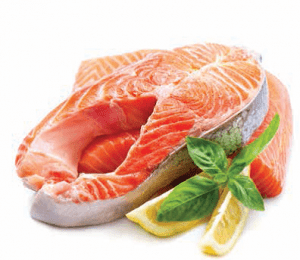 THERE ARE FOUR TYPES OF FAT; SOME ARE GOOD FOR YOU WHILE OTHERS ACTUALLY INCREASE THE RISK OF HEART DISEASE. HERE ARE A FEW TIPS TO HELP YOU KNOW WHICH FATS SUPPORT A HEALTHY HEART AND WHICH DO NOT.
THERE ARE FOUR TYPES OF FAT; SOME ARE GOOD FOR YOU WHILE OTHERS ACTUALLY INCREASE THE RISK OF HEART DISEASE. HERE ARE A FEW TIPS TO HELP YOU KNOW WHICH FATS SUPPORT A HEALTHY HEART AND WHICH DO NOT.
The Bad Fats
The most significant thing about unhealthy fats is that they can have a direct bearing on your blood cholesterol levels. Two types of fat are known to increase bad cholesterol (LDL) – trans fats and saturated fats. The American Heart Association defines saturated fats as fat molecules that have no double bonds between carbon molecules because they are saturated with hydrogen molecules. Since saturated fats are so dense, they are usually solid at room temperature. Saturated fats are mostly found in animal meat and animal products. Some examples include beef, lamb, pork, and chicken with skin, lard, butter, cheese, and whole milk.
Trans fats are in a category by themselves. These fats are typically the end product of hydrogenation, the process of adding additional hydrogen to convert oil into a denser product. The process increases shelf life. Read nutritional labels to detect such fats identified as hydrogenated oil or partially hydrogenated. You will find partially hydrogenated oils in non-dairy creamer, for example. Trans fats are dangerous. Because they are not a naturally occurring substance are hard, they are difficult for the body to digest. In addition, trans fats have been shown to raise bad cholesterol (LDL) while lowering good cholesterol (HDL). Studies also show that they contribute to a higher risk of developing type 2 diabetes, and increase the risk of certain types of cancer.
The Good Fats
Monounsaturated fats and polyunsaturated fats are the good fats. These are less dense fats, typically liquid at room temperature. Not only do these fats lower bad cholesterol, but also contain essential fatty acids like omega-6 and omega-3 that support cellular function. Monounsaturated and polyunsaturated fats may also contain the vital antioxidant vitamin E, important for a strong, healthy immune system.
Plant-based oils such as sunflower seed oil, olive oil, and safflower oil, contain good fats along with trout, herring, salmon, avocadoes, walnuts, chia seeds, hemp seeds, flaxseeds, for example.
 The formula for HEART SMART LIVING
The formula for HEART SMART LIVING
A healthy, balanced diet plus regular, moderate physical activity is the formula for a strong, healthy heart.
Step 1: A heart smart diet is one low in bad fats (trans fats and saturated fats). A good rule of thumb is to lower your consumption of animal meats, animal products (dairy), and highly processed foods, as these are the most popular sources of bad fats.
Step 2: Increase the amounts of whole, plant-based foods rich in good fats (monounsaturated and polyunsaturated fats). These good fats support heart health by reducing LDL cholesterol and increasing HDL cholesterol. This change in diet will keep your body clean, lowering your risk of clogged arteries which often leads to heart disease.
Step 3: Staying fit and active is another important key to heart smart living. For overall cardiovascular health, the American Heart Association offers the following exercise recommendations: Perform at least 30 minutes of moderate- intensity aerobic activity at least 5 days per week for a total of 150 minutes or at least 25 minutes of vigorous aerobic activity at least three days per week for a total of 75 minutes, or a combination of moderate- and vigorous-intensity aerobic activity and moderate- to high-intensity muscle-strengthening activity at least two days per week for additional health benefits.
Resource material: American Heart Association







Comments are closed.